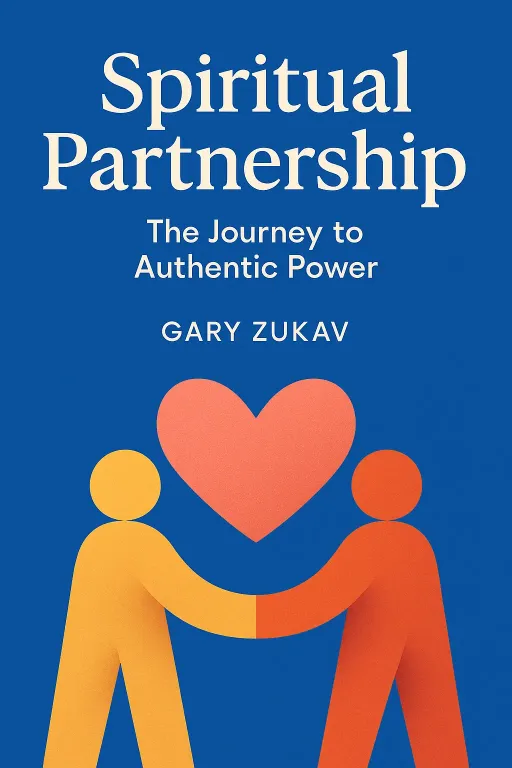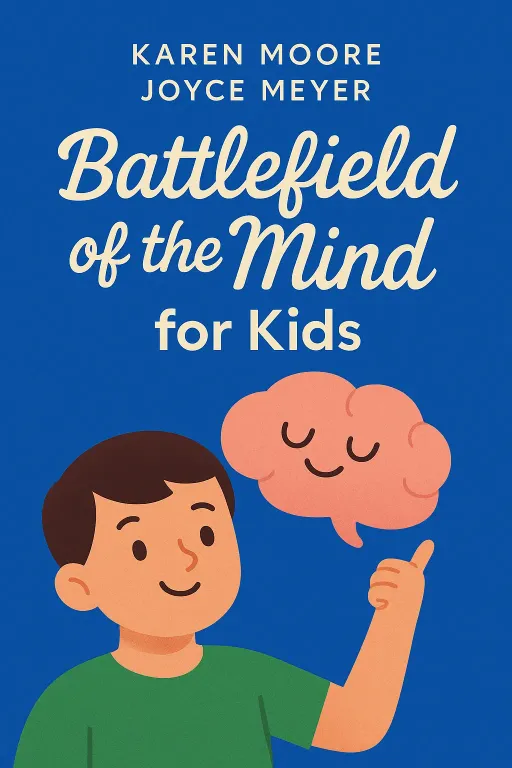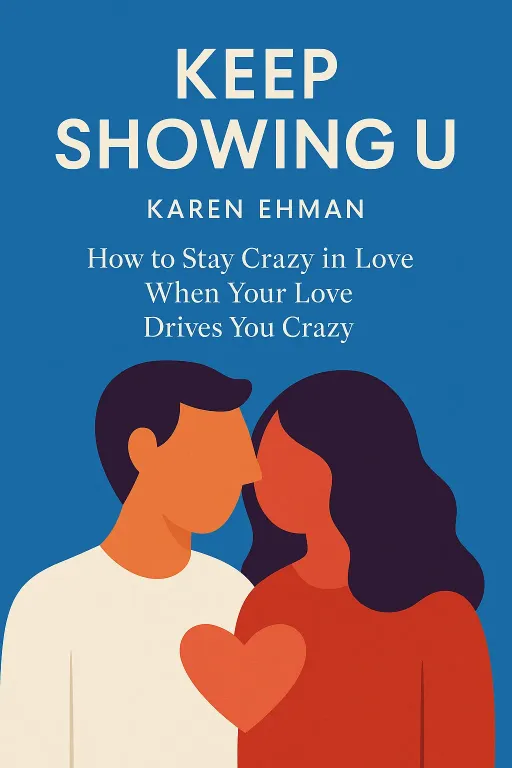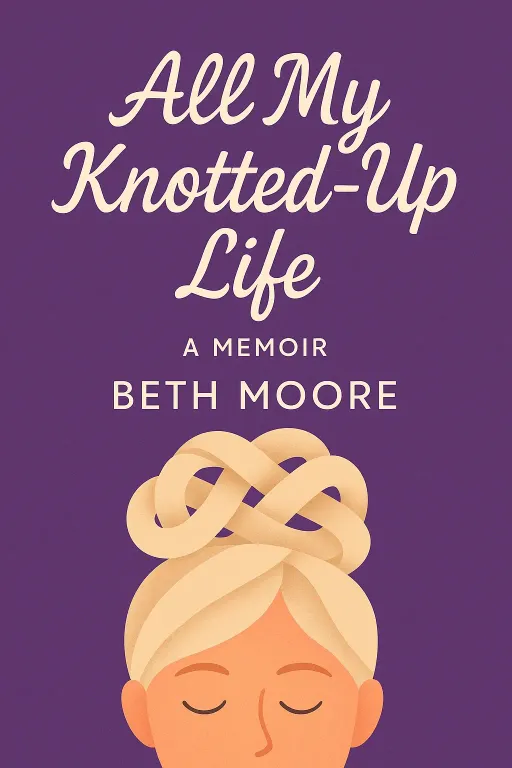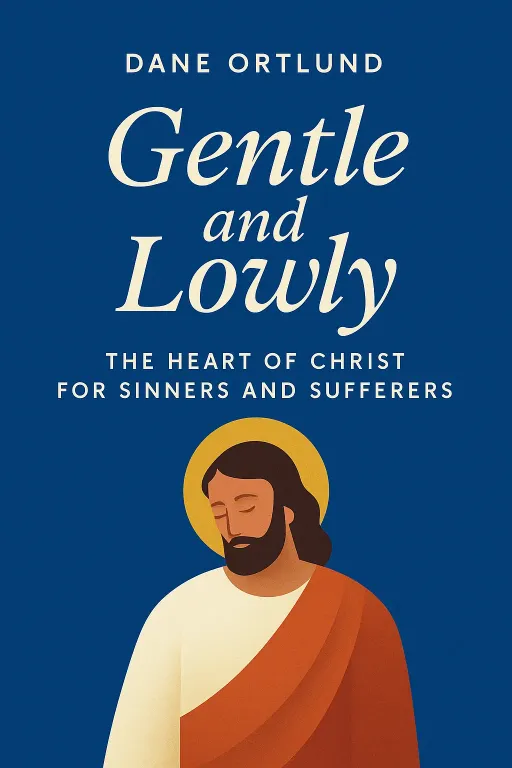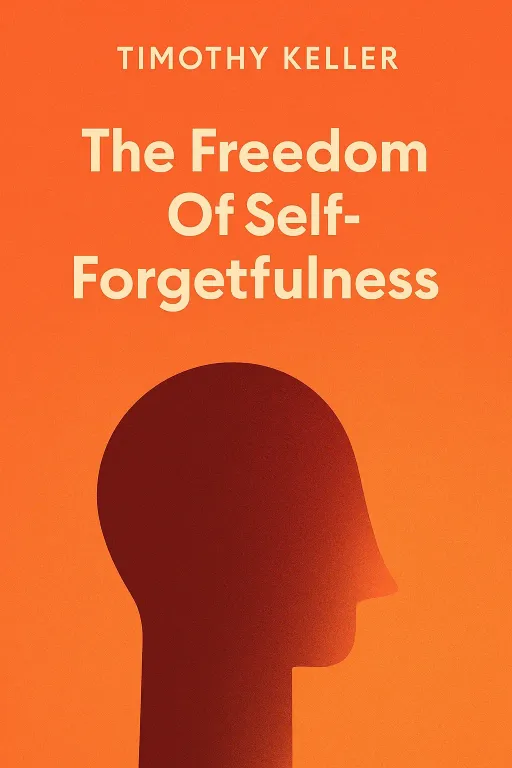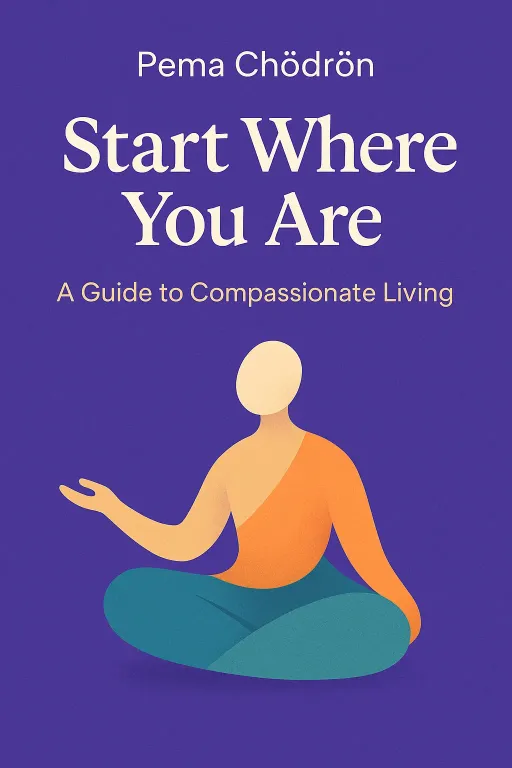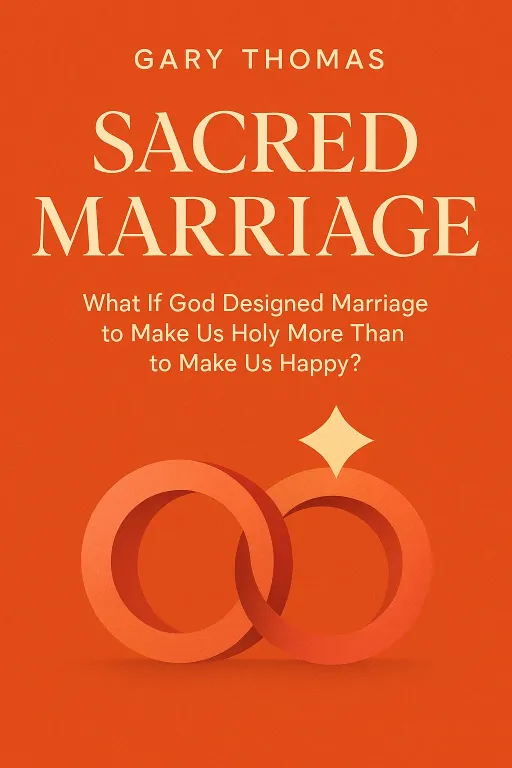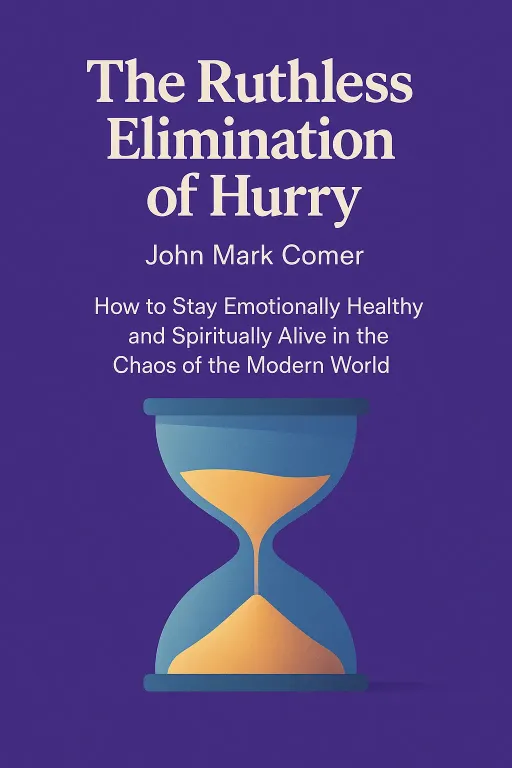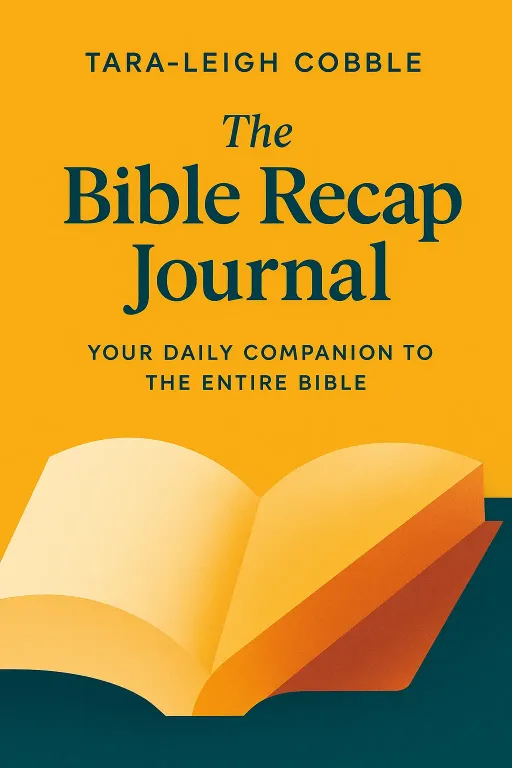
Deconstructing Complexity: A Thinker's Guide to The Bible Recap
13 minGolden Hook & Introduction
SECTION
Socrates: Nathan, here's a question for you. Imagine you're handed one of the most complex, influential, and debated datasets in human history—the Bible. Thousands of pages, written over centuries by dozens of authors. Your task: design a system to understand it. Not just read it, but truly it. Where would you even begin?
Nathan: That’s a fascinating problem. My first thought is that a simple, linear approach would fail. You'd need more than just a reading plan. You'd need a multi-layered approach... tools for research, a way to process your own thoughts, maybe even a collaborative element to check your interpretations. You'd need a complete learning ecosystem, not just a book.
Socrates: A learning ecosystem. That is the perfect phrase. And it's precisely what we're exploring today through Tara-Leigh Cobble's book, "The Bible Recap Journal." We're not looking at it just as a religious text, but as a masterclass in system design for engaging with complex information. It's a blueprint.
Nathan: So, we're reverse-engineering the learning process itself. I like that.
Socrates: Exactly. And today we'll dive deep into this from two perspectives. First, we'll explore the 'full-stack' architecture of the Bible Recap method—its complete system for engagement. Then, we'll zoom in on its analytical engine—the powerful questioning techniques and research tools that drive deep understanding.
Nathan: Architecture and engine. Sounds like my kind of analysis. Let's do it.
Deep Dive into Core Topic 1: The 'Full-Stack' Approach to Understanding
SECTION
Socrates: So, let's start with that architecture, that 'learning ecosystem' you mentioned. Many people try to read the Bible, get to Leviticus, and just... stop. They get overwhelmed. Cobble's approach in "The Bible Recap" seems designed specifically to combat that overwhelm by creating a structured, daily workflow.
Nathan: A workflow is key. It breaks a massive, intimidating goal into manageable daily tasks. It reduces the cognitive load. So what does this workflow look like?
Socrates: It’s a five-part process, and each part serves a distinct function. The book lays it out as a daily and weekly rhythm. First, you have the foundational step: Daily Bible reading. You follow a plan, either for the whole Bible or just the New Testament. This is your raw data intake.
Nathan: Okay, the primary source material. Standard enough.
Socrates: Right. But here's where it gets interesting. Step two is to use "The Bible Recap Journal" your reading. This isn't for deep study, but for immediate, personal reflection. A place to jot down questions, confusions, or things that stand out. It’s your personal scratchpad.
Nathan: Ah, so it's capturing the initial, unfiltered thoughts. It's like logging your immediate reactions before they get polished. That's a smart way to separate raw impression from later analysis.
Socrates: Precisely. Then comes step three, after the reading: the daily study guide. This is where the structured thinking begins. The guide provides specific questions to answer, moving you from passive reading to active engagement.
Nathan: So, intake, then personal reflection, then structured analysis. I'm seeing the layers. It's like a data processing pipeline.
Socrates: It is. And the pipeline continues. Step four is to listen to the corresponding daily podcast episode or read the entry in the main "Bible Recap" book. This is where you get expert commentary. Tara-Leigh Cobble provides historical context, clarifies confusing passages, and connects the day's reading to the Bible's overarching narrative.
Nathan: Okay, so that's the expert consultation layer. You've done your own work, and now you're checking it against a seasoned guide's perspective. It prevents you from going too far off track with a wild interpretation.
Socrates: Exactly. And finally, step five, which is weekly: using the "Weekly Discussion Guide" in a group conversation. This is the peer-review stage. You take your personal reflections and structured analysis and test them in a community.
Nathan: Wow. So, let me see if I have this right. Read, Journal, Study, Listen, Discuss. It's a complete, 'full-stack' system. You have the front-end user experience of reading, the personal back-end of journaling, the structured logic of the study guide, the API call to an expert via the podcast, and the user-testing of the group discussion.
Socrates: That is a brilliant way to put it. A full-stack approach to spiritual or intellectual engagement. It's not just one thing. It's a multi-modal system that caters to different learning styles and cognitive functions.
Nathan: And it's designed to build momentum. Each step feeds the next. Your journaling informs your study, your study gives you context for the podcast, and all of it gives you material for discussion. It's an elegant design. It touches on improving your mindset because it forces you to be disciplined, but also your creativity and empathy, because you're engaging on both a personal, reflective level and a communal, interactive one.
Socrates: And by separating these tasks, you're never trying to do everything at once. You're not trying to be a historian, a theologian, and a personal mystic all in the same five minutes of reading a chapter. The system gives you permission to just do one thing at a time, and do it well.
Nathan: That's the genius of a good workflow. It makes a complex process feel achievable. But a system is only as good as its engine, right? The tools you use within that workflow.
Socrates: You've anticipated our next topic perfectly. Let's talk about that analytical engine.
Deep Dive into Core Topic 2: The Analytical Engine: Beyond Surface-Level Reading
SECTION
Socrates: Right, so we have this fantastic five-step architecture. But as you said, it's the quality of the work you do inside that structure that matters. This is where Cobble's approach gets really powerful, especially for an analytical mind. The book states, and I'm quoting here, "In order to connect with and challenge all types of readers, we’ve offered a variety of questions throughout these guides—objective, subjective, and critical thinking."
Nathan: That distinction is everything. It's the difference between a high school book report and genuine research. Can you break down what those question types look like in practice?
Socrates: Absolutely. An objective question might be, "Who was the king of Judah during this event?" It's a researchable fact. It forces you to pay attention to the details in the text.
Nathan: The 'what'. The pure data.
Socrates: Exactly. Then a subjective question might be, "How does this passage make you feel?" or "Where do you see yourself in this story?" This is the journaling part, the personal connection. It's about building empathy.
Nathan: The 'so what' for me, personally.
Socrates: And then there's the critical thinking question. This might be, "Why do you think the author chose to include this detail but not another?" or "How does this event connect to a theme we saw in a book we read three months ago?" This is the synthesis, the connection-making.
Nathan: The 'why'. The systems-level thinking. That's where the real understanding is built. It's not just knowing facts or having feelings; it's understanding the structure, the intent, the network of ideas. It reminds me of Einstein—he didn't just learn the equations of physics; he asked fundamental 'why' questions about the nature of space and time, which led to his breakthroughs.
Socrates: That's a fantastic parallel. This method encourages you to be your own Einstein, in a way. To not just accept the text, but to interrogate it. And it doesn't just ask you to do this in a vacuum. The book explicitly points to the tools you need. It's like giving a mechanic a task but also a full toolbox.
Nathan: You're talking about the recommended resources?
Socrates: Yes. The author lists a whole suite of free, online resources she used for her own research. Websites like Blue Letter Bible, which has Hebrew and Greek lexicons, or Bible Project, which has animated videos explaining complex themes, or GotQuestions. org for theological queries.
Nathan: So it's not a closed system. It's an open-source approach to learning. It's saying, "Here is our framework, and here is the tech stack you can use to power your own research." That's incredibly empowering. It gives the user agency. You're not just a consumer of information; you're an active participant in the discovery process.
Socrates: And it connects directly to your interest in technology. This isn'tBronze Age study method. It's a 21st-century approach that leverages the best digital tools available to deepen understanding of an ancient text.
Nathan: It's the perfect blend of the timeless and the timely. You're using modern tech to unlock ancient wisdom. This whole second part, the analytical engine, is what prevents the system from becoming a rigid, dogmatic ritual. The questions and the external tools ensure that it remains a dynamic, evolving process of discovery. It's designed for a curious mind.
Socrates: It's designed to sharpen your research skills, as the book says. To make you a better thinker, not just a more knowledgeable reader.
Nathan: Which is the ultimate goal of any good learning system.
Synthesis & Takeaways
SECTION
Socrates: So, to bring it all together, what we've seen in "The Bible Recap" is this beautifully designed, two-part solution to a very old problem. First, you have this elegant, 'full-stack' system for engagement that provides structure and prevents overwhelm.
Nathan: Right. The five-step workflow: Read, Journal, Study, Listen, Discuss. The architecture.
Socrates: And then, at its heart, you have this powerful analytical engine, powered by critical questioning and a modern tech stack of research tools, that ensures the process is one of deep, active discovery.
Nathan: The engine that drives it. The system provides the structure, and the engine provides the depth. You absolutely need both to tackle something this complex and derive meaningful insight, whether it's for your mindset, your creativity, or your empathy.
Socrates: Which brings us to the final, and perhaps most important, question. The takeaway for our listeners, and for you, Nathan. The real lesson here isn't necessarily to go read the Bible, though the system is designed for that. It's to look at this. So, what's one complex topic in your life—be it a new technology, a philosophical concept, or even a difficult professional challenge—that you could apply this 'Recap' model to?
Nathan: That's the real challenge, isn't it? It's about taking this blueprint and applying it. You could use it to understand AI, for example. Step 1: Read the foundational papers. Step 2: Journal your thoughts and ethical questions. Step 3: Follow a structured online course with problem sets. Step 4: Listen to podcasts with experts in the field. Step 5: Join a forum or a local meetup to discuss it.
Socrates: You've just designed "The AI Recap."
Nathan: Exactly. The model is universal. The ultimate takeaway is to build your own little 'recap' system for whatever you want to master. Find your sources, define your questions, process your thoughts, consult the experts, and discuss it with your peers. That's not just a study method; it's a universal model for lifelong learning.
Socrates: A universal model for lifelong learning. I can't think of a better place to end. Nathan, thank you for deconstructing this with me today.
Nathan: This was fascinating. Thank you, Socrates.
